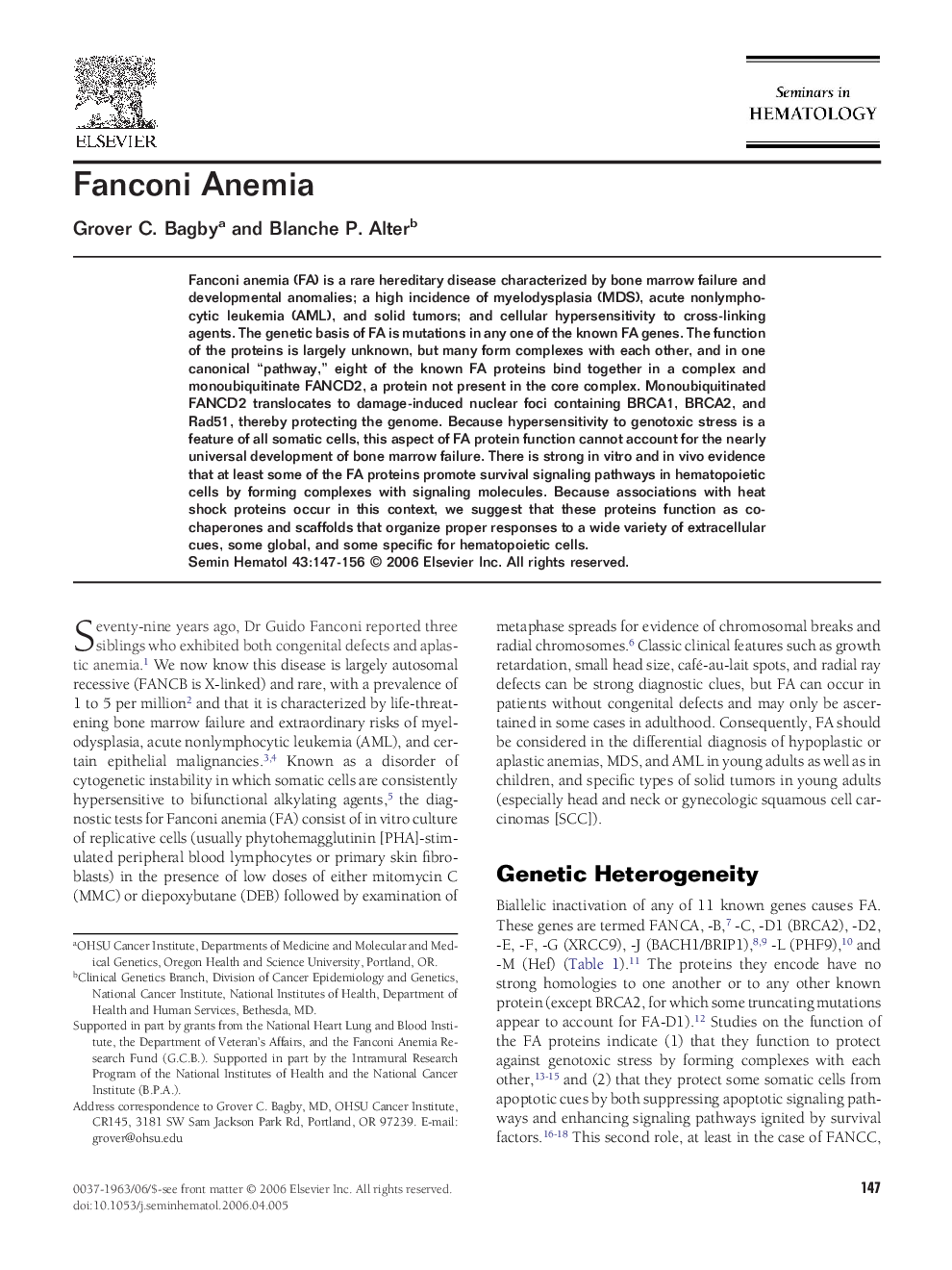| Article ID | Journal | Published Year | Pages | File Type |
|---|---|---|---|---|
| 3334262 | Seminars in Hematology | 2006 | 10 Pages |
Fanconi anemia (FA) is a rare hereditary disease characterized by bone marrow failure and developmental anomalies; a high incidence of myelodysplasia (MDS), acute nonlymphocytic leukemia (AML), and solid tumors; and cellular hypersensitivity to cross-linking agents. The genetic basis of FA is mutations in any one of the known FA genes. The function of the proteins is largely unknown, but many form complexes with each other, and in one canonical “pathway,” eight of the known FA proteins bind together in a complex and monoubiquitinate FANCD2, a protein not present in the core complex. Monoubiquitinated FANCD2 translocates to damage-induced nuclear foci containing BRCA1, BRCA2, and Rad51, thereby protecting the genome. Because hypersensitivity to genotoxic stress is a feature of all somatic cells, this aspect of FA protein function cannot account for the nearly universal development of bone marrow failure. There is strong in vitro and in vivo evidence that at least some of the FA proteins promote survival signaling pathways in hematopoietic cells by forming complexes with signaling molecules. Because associations with heat shock proteins occur in this context, we suggest that these proteins function as co-chaperones and scaffolds that organize proper responses to a wide variety of extracellular cues, some global, and some specific for hematopoietic cells.
